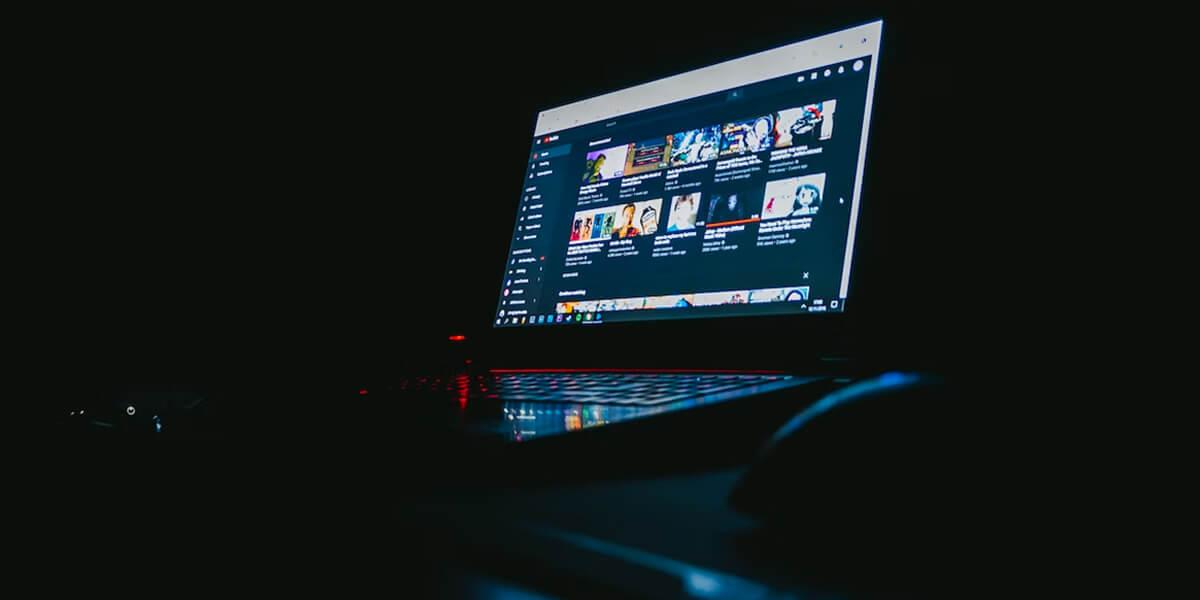As a creator, you have access to amazing, powerful technology for making digital content. And there is amazing, powerful technology for you to distribute and sell your content conveniently, even on a global scale.
But these same technologies also make it convenient for content pirates to use your content without your permission, even on a global scale. You work hard to create content, and you’re entitled to get the most benefit and opportunities from it. As such, you should learn how to protect against content piracy, what options you have, and tools you can use for piracy protection.
This post was reviewed by Ken Negard, Security Architect and Systems Engineer at Robot Talk, a security and systems design consultancy for VFX, film and TV studios.
The Ins and Outs of Content Piracy
Certified Secure File Transfer for Media
MASV is certified under ISO 27001 and an official Gold Shield vendor of the Motion Picture Association’s TPN roster.
What is Content Piracy?
Content piracy is when someone sells, shares, or reuses your content without your permission.
Unfortunately, piracy is unavoidable. Anti-piracy laws are complicated, and there are many choices to control who uses your content and how. As a content creator, you can reduce the risks and costs of piracy by learning how to safely navigate these issues.
Why it’s Important to Protect Against Piracy
There are risks to content piracy that you might not be able to ignore. Piracy websites capture an incredible volume of internet traffic — about 700 million visits every month in the U.S. alone.

Photo by @magellol on Unsplash
Because of this, you could earn less revenue, miss opportunities, or lose control of your own content. Any of these risks reduces your incentive to create.
But while piracy can cost you revenue or opportunities, protecting your content can be costly too. There are trade-offs between protecting your content and making it usable for your audience.
💡 Read More: 5 Side Hustles for Video Production Professionals
Identifying Digital Content Piracy
Piracy is another way to say copyright infringement. Most countries have copyright laws that define what can be copyrighted and what constitutes infringement.
These laws are complicated by many subtleties. Before you go after someone who you suspect is infringing on your copyright, do some research:
- Is it copyrightable in the first place? Generally speaking, copyright laws protect an original expression of an idea, not the idea itself. You cannot claim copyright for “good vs evil” but copyright does protect your unique telling of this kind of story.
- Is it a copyright exception? Copyright laws have exceptions that let people use your content without your permission. These can include journalists using parts of your content to report the news and parodies of your work.
- Is it worth it? Make sure the cost to stop piracy is less than the cost of the piracy itself. The time and effort you put into stopping piracy is an opportunity cost for creating more content.
Protect Your Content With Secure File Transfer
Creative professionals trust MASV to securely transfer their large volumes of data.
Types of Digital Content Piracy
How do you know if your content is being pirated? Content piracy typically happens in one of these forms:
1. Peer-to-Peer (P2P) File Sharing
The most popular P2P tool is BitTorrent, an internet protocol for sharing files. Many open source projects use BitTorrent to legitimately distribute their software. BitTorrent can be fast because of its decentralized design. That’s a double-edged sword; content pirates like to use BitTorrent because there’s no single, central server that can be shut down.
💡 Related: What is Decentralized Storage?
2. Illegal Streaming and File Storage
There are many websites that intentionally stream or store pirated digital content. Many don’t last long because they’re stopped by law enforcement. But they’re lucrative enough that new ones pop up all the time.
3. Legitimate Streaming and File Storage
Someone copies your content and then distributes or sells it on a legitimate website. They get away with this by circumventing the website’s anti-piracy detection. For example, YouTube’s Content ID system takes a digital fingerprint of your video. It uses this to find unauthorized copies of your videos. A pirate might change your content by cropping the video or distorting the audio just enough to trick Content ID.

Photo by @leon_bublitz on Unsplash
4. Web Scraping
Web scraping is the process of scanning a website to copy its content. There are legitimate uses of web scraping. For example, search engines scrape the web to build their search results.
Content pirates also scrape your website’s content, which they then host in a country with lax copyright laws. They often do this to increase their search rankings, which consequently could lower yours.
Tools to Protect Against Content Piracy
There are technical solutions to manage who can use your content and how, known as Digital Rights Management (DRM). Copy protection measures have evolved since the Content Scrambling System for DVDs in the late 1990s. Today there are several DRM technologies to take advantage of.
1. Watermarks
Watermarking doesn’t prevent copying, but it does make it less appealing to pirates. For images and videos, a watermark usually appears as superimposed text. For audio, it can be an occasional interruption with an announcement. For example, stock image providers offer two versions of their images, the free versions have watermarks and the paid versions don’t.
2. Tracking
Forensic watermarking modifies content like regular watermarking. But it does it in a way that people can’t perceive but a computer can still retrieve. For example, when someone buys your music from an online store, the store embeds a unique ID into the audio file that the customer downloads.
Or you can use metadata to add unique information to trace back to the customer. For example, the MP4 format specifies a standardized way to add metadata to a multimedia file.
You can also register your content in a multimedia blockchain. You, and other participants in the blockchain, can retrieve a verifiable record of the ownership and permissions for your content.
3. Closed Platform
A closed platform, also called a walled garden, makes your content available only to authorized users inside the platform. The platform uses encryption and authentication to make it hard to use your content outside the platform. For example, Netflix lets registered users play videos only on Netflix apps.
4. File Monitoring
This is a service that scans the internet for copies of your content. You upload your images, video, audio, or text to the file monitoring service. Then it tells you which websites contain potentially pirated files.
5. Active Verification
You can add product keys and “phone home” features to your software. If the product key is invalid or expired, your software can disable some of its features or stop completely.
6. Content Protection System
This is probably the most sophisticated approach to protecting against piracy. Content protection systems provide a cohesive set of anti-pirating measures, including authentication and encryption. There are a few content protection services available, including Amazon and Microsoft. This option can be useful if you have the software development expertise.
The Best Secure Cloud File Transfer Tool
Protect your transfers with password-protection, custom file expiry, download limits, and in-flight and at-rest encryption.
Legal Implications of Content Piracy
Most countries have legislation that makes it illegal to circumvent your copy protection or use your content without your permission.
In the United States, the Digital Millennium Copyright Act (DMCA) makes it a criminal offense to break copy protection. And it specifies extra penalties for infringing copyright on the internet.
Under the DMCA, websites in the United States are obligated to answer your request to remove illegal copies of your content. You do this by sending them a DMCA takedown notice.
Some companies go a step further with useful tools to help you find and report copyright infringement. For example, Google has tools and resources for their search engine, YouTube, and Google Play online store.
Tips on Protecting Content from Piracy
Follow these basic safety tips for digital piracy.
Prepare Yourself Legally
You can get extra piracy protection by asserting your legal rights:
- Copyright registration: This gives you a verifiable, legal claim that you own the copyright to your content.
- Licensing agreement or terms of use: Make it clear how people can use your content.
Prevention Goes a Long Way
Prevent hackers from infiltrating your computer and network.
Get informed about security practices for your industry, like film and TV production. Also, there are organizations who specialize in protecting content. One of these is the Trusted Partner Network (TPN), which raises awareness and promotes security improvements for film and television.
Protect your Content When Collaborating Remotely
Your content is vulnerable when it leaves your local network. MASV is an excellent solution to transfer files securely. Besides encryption, it has several security advantages like custom file expiry, download limits, ISO 27001 certification, and is an official member of the TPN vendor roster (Gold Shield status).
Find the Solutions for You
The tools that make it easy for you to distribute your content also make it easy for other people to pirate it. Copyright laws give you legal rights but preventing piracy can get costly. Luckily, with the right knowledge about the types of piracy and the ways you can manage it, you can learn how to protect against content piracy.
One solution is to use a secure file transfer tool like MASV as an anti-piracy measure.
MASV is a large file transfer service designed for creative professionals working with large volumes of data. Our customers are some of the most notable names in media and entertainment. As such, content security is critical.
MASV provides:
- Peace of mind with industry-leading compliance with the likes of ISO 27001, TPN, and GDPR.
- Protection against hackers thanks to in-flight (TLS 1.2) and at-rest (AES-256) encryption.
- Protection against unwanted access thanks to file expiry dates, download limits, and user access controls such as password protection, multi-factor authentication (MFA), and SAML-based Single Sign-On (SSO).
Get fast, easy, and secure delivery of large media files — try MASV for free today and receive 20 GB to test things out.
MASV Large File Transfer
Get 20 GB to use with the fastest, secure file transfer service available today, MASV.